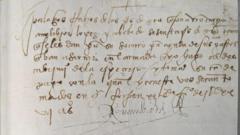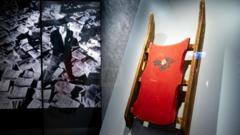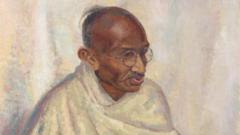The delicate jewels and holy relics, believed to be buried alongside the remains of Buddha, sit poised for auction, igniting a significant legal battle. These artifacts, taken from India in 1898 by a British explorer, were unearthed alongside remains thought to be part of the revered figure. Now, the Indian government intervenes as Sotheby’s prepares to auction off the collection owned by the explorer's descendants, a sale that speaks volumes about historical injustices surrounding imperial looting.
The Indian Ministry of Culture recently issued a legal order demanding the return of these sacred relics for "preservation and religious veneration." This incident resonates with a critical debate emerging from the shadows of colonial history: how to address the ownership and value of cultural treasures extracted from once-colonized nations. Ashley Thompson, an art professor specializing in Southeast Asian culture at the University of London, articulates this dilemma succinctly: "We’re in this movement that’s long overdue, to rethink the status of culturally significant artwork."
India's efforts align with a larger global movement where various nations are reevaluating the fate of looted artifacts. Museums in the United States have begun returning relics to Indigenous peoples, while European countries like the Netherlands have sent colonial-era treasures back to their countries of origin, including Nigeria and Sri Lanka. As these discussions continue to unfold, the timing of the auction adds urgency to the call for restitution, shining a spotlight on the moral and ethical responsibilities associated with cultural heritage.
As the legal battle develops, many are watching closely, not only for the outcome concerning these precious relics but also for the potential broader implications regarding the return of indigenous treasures worldwide.
The Indian Ministry of Culture recently issued a legal order demanding the return of these sacred relics for "preservation and religious veneration." This incident resonates with a critical debate emerging from the shadows of colonial history: how to address the ownership and value of cultural treasures extracted from once-colonized nations. Ashley Thompson, an art professor specializing in Southeast Asian culture at the University of London, articulates this dilemma succinctly: "We’re in this movement that’s long overdue, to rethink the status of culturally significant artwork."
India's efforts align with a larger global movement where various nations are reevaluating the fate of looted artifacts. Museums in the United States have begun returning relics to Indigenous peoples, while European countries like the Netherlands have sent colonial-era treasures back to their countries of origin, including Nigeria and Sri Lanka. As these discussions continue to unfold, the timing of the auction adds urgency to the call for restitution, shining a spotlight on the moral and ethical responsibilities associated with cultural heritage.
As the legal battle develops, many are watching closely, not only for the outcome concerning these precious relics but also for the potential broader implications regarding the return of indigenous treasures worldwide.

















